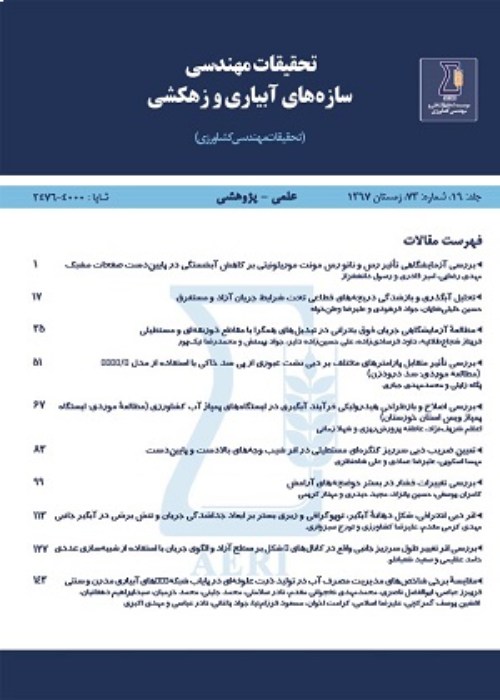Investigation of the Effect of Symmetrical Deflector Angle on Performance of Vertical Intake
Formation of air-entraining vortices in an intake leads to unsteady flow and cause problems such as vibration in hydro mechanical equipment, abnormal noises, severe fluctuations in local pressures and exacerbated cavitation conditions (Chen & Chen, 2015). As stated by (Sarkardeh, 2017) the stronger vortex the greater will be its negative effects on intake performance. There have been many studies on the critical submerged depth and vortex formation in intakes. (Kocabas & Yildirim, 2002) investigated the effect of rotational flow on the critical submerged depth in intakes and found that the vortex formation with the air-core vortex and the critical submerged depth was significantly dependent on the approach flow conditions and the inlet geometry. Therefore, a separate case study should be undertaken to address any structure with a particular geometry. In this paper, the effect of flow rate deviation due to the use of a deflector on a vertical intake was investigated. In this paper, also the variation of submerged depth, Froude number, vortex type, and critical submerged depth was discussed.
In this study, different scenarios were created by varying the deflector angle from 3 to 11 degrees. In order to measure the discharge rate, the flow passes an electromagnetic flow meter with a full-scale accuracy of ±0.2%. A depth gauge with an accuracy of ±0.05 mm was used to measure the water head on the intake crest. Given that the critical submerged depth is in agreement with the nature of the type 4 vortex (Naderi & Gaskin, 2018). Therefore, in experiments with the observation of type 4 vortex, the critical submerged depth was determined. Then, according to the dimensional analysis and the results of the last experiments, the key factors affecting the critical submerged depth, including deflector angle (α) and Froude number (Fr) were identified. The range of variation of the tested parameters included in deflector angle (α) of 3, 7 and 11 degrees, the discharge of 2 to 26 liter/s and the Froude number of 0.3 to 3.9.
After processing experimental observations, the trend of the rating curve changes, the relative submerged depth versus the Froude number, as well as the vortex type were evaluated. The results showed that the flow with a higher deviation angle α has a steeper rating curve. In other words, the angle α has a direct effect on the spherical sink surface sector, so that by increasing the angle α, the effective cross-sectional area of the flow decreases, resulting in a reduced spherical sink surface sector, and leading to a weak performance of the intake. This caused water to be stored in the reservoir for low discharges. According to the experimental observations at a fixed Froude number, the greater the angle α, the lower the relative submerged depth. To be more precise, the deflector inside the intake, in turn, compresses the air-core vortex and moves it upstream, thereby creating weak vortices and reducing the amount of rotation of the flow on the crest, thus it was observed that with increasing the angle α at a constant Froude number, less relative submersion depth was required. On the other hand, decreasing the angle of α causes the vortex core to be emitted outward, so more rotation was needed to maintain this vortex. Therefore, in this situation, the intake at a constant Froude number requires a greater relative submersed depth.
The results of this study showed that the use of a deflector in the vertical intake, in addition to reducing the critical submerged depth, weakens the formation of a vortex, stabilizes reservoir water level changes, and prevents unsteady flow conditions. The results also revealed that an increase in deviation angle α and consequently the Froude number, allowed the vortex compression effect to impose the greatest impact on the relative submerged depth (S/Di).
We are grateful to Jundi-Shapur University of Technology and for funding of present project allowing access to the hydraulic and river engineering laboratory of the Department of Civil Engineering.
- حق عضویت دریافتی صرف حمایت از نشریات عضو و نگهداری، تکمیل و توسعه مگیران میشود.
- پرداخت حق اشتراک و دانلود مقالات اجازه بازنشر آن در سایر رسانههای چاپی و دیجیتال را به کاربر نمیدهد.


